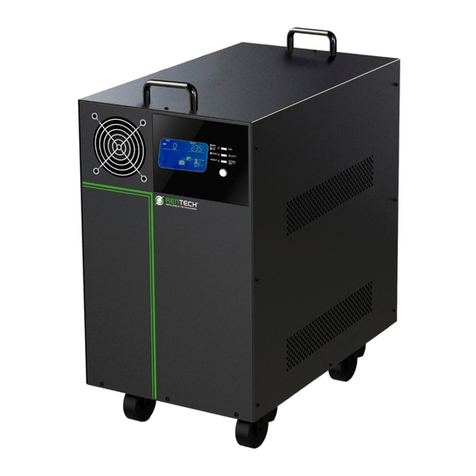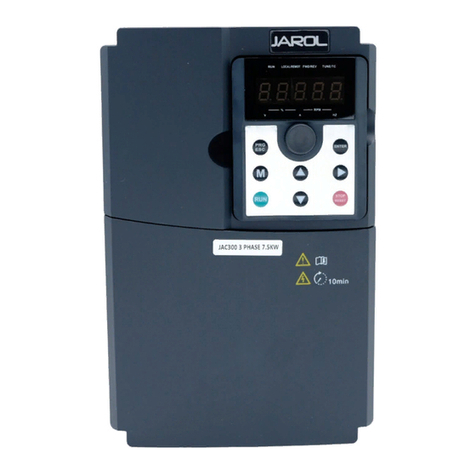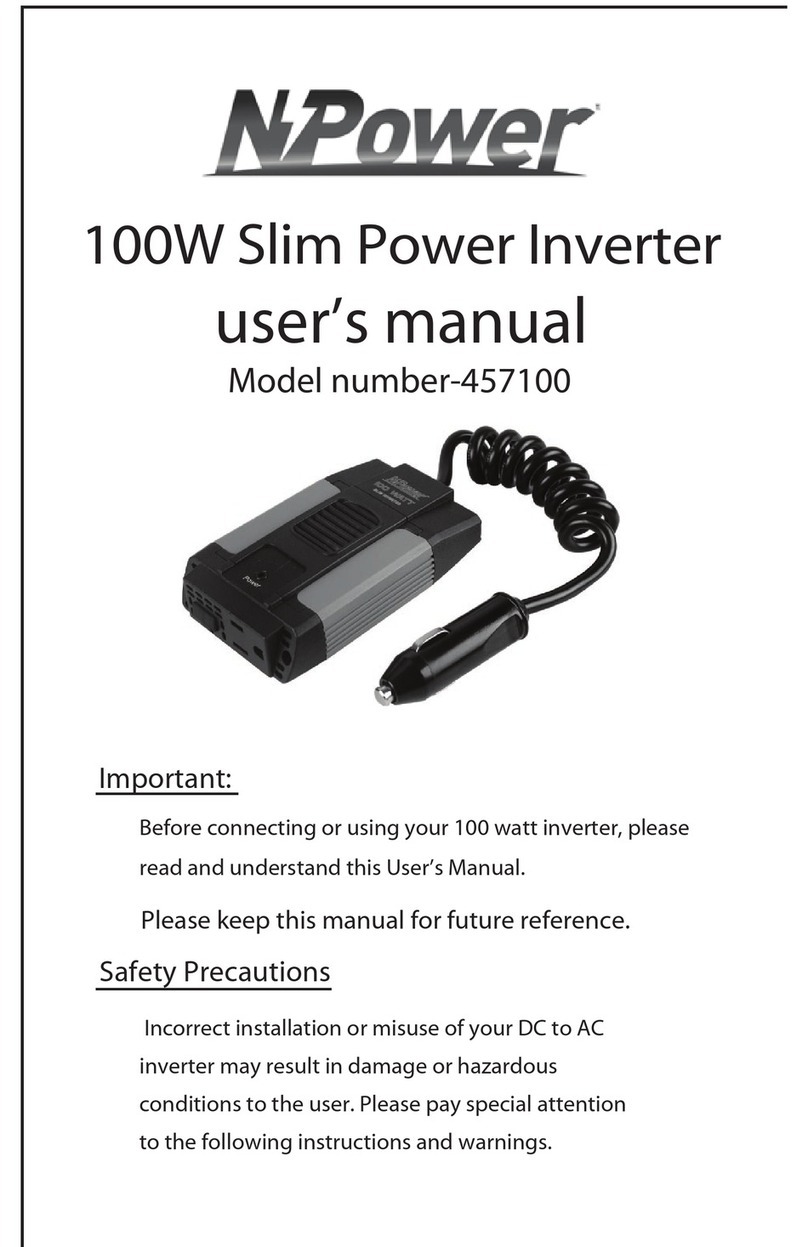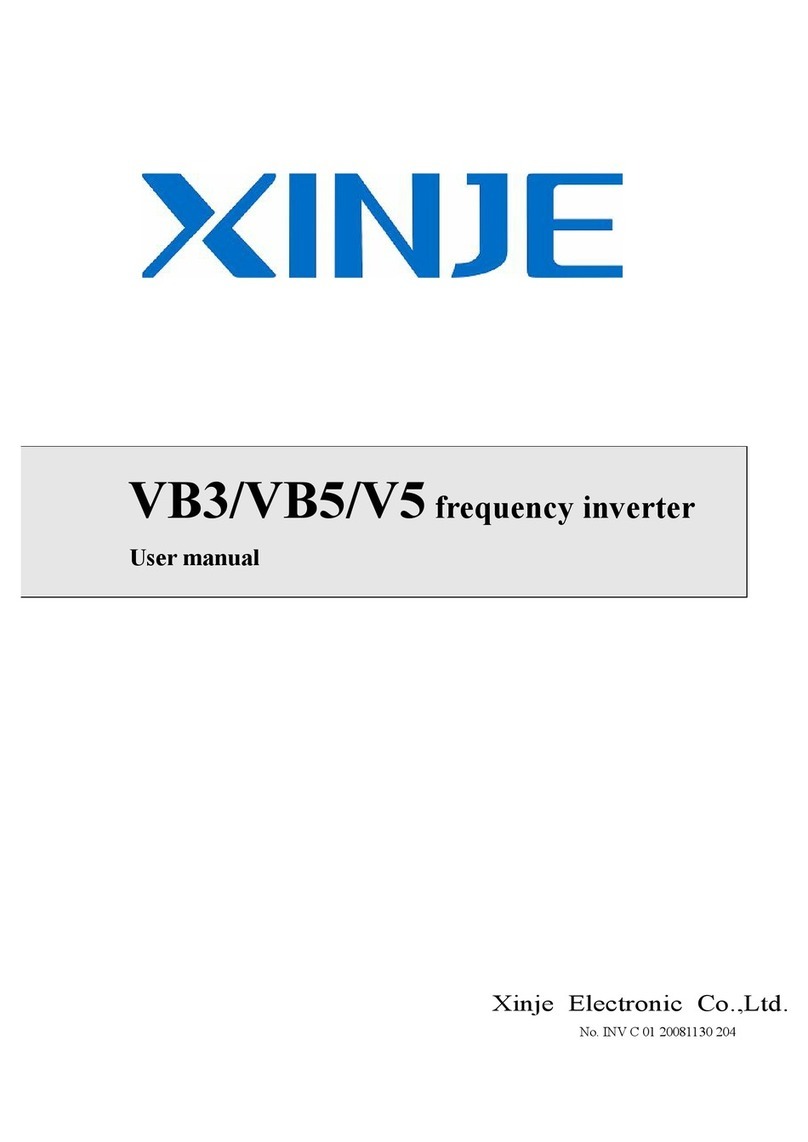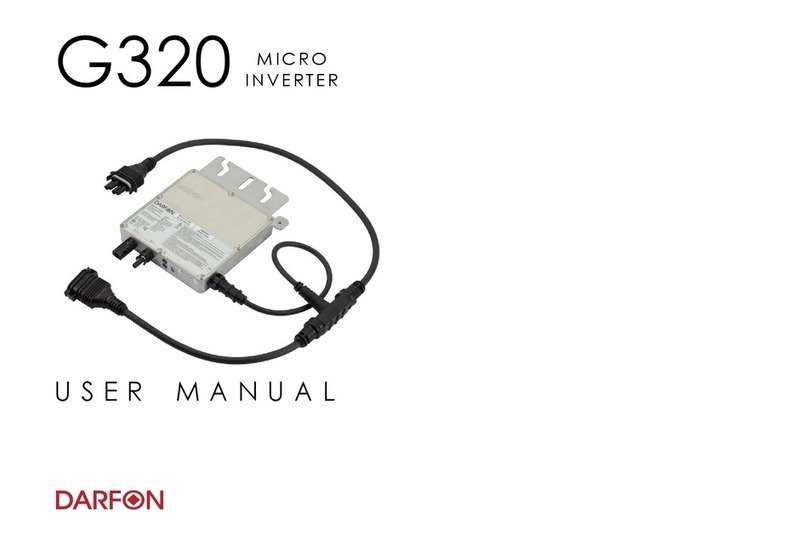HIPower HW400A User manual

SERVICE MANUAL
WARNING
This equipment is designed and built with safety in mind. However, your overall
safety can be increased by your full understand followed by the content in this
manual.
Read this manual and familiarize yourself with its contents for your safety.
This equipment should only be operated and maintained by trained and qualified
personnel.
This equipment is designed for arc welding and generating power source of
electric tools, home appliances and lights.
Do not install, operate or service this equipment without reading this manual and
unless you clearly understand this manual.
Generating application for this equipment is 0Hz ONLY.
Specifications subject to change without notice.

File №DGW-360_HW400A
This service manual is edited for authorized person to perform repair,
maintenance, and trouble-shooting to HIPOWER Diesel Engine Generator
Welder, Model Designation HW400A.
It is inevitably necessary to maintain and adjust HIPOWER products
periodically in order to use fully and safely for long time. Therefore,
understand this service manual fully enough before use and proper
maintenance.
The information contained in this service manual describes equipment
available at the time of publication. While every attempt has been made to
give you the very latest information about your product, there may be some
differences between your equipment and the equipment described in this
manual. We reserve the right to make changes to equipments without prior
notice, and without obligation to make alterations to equipments previously
manufactured.
For service of the engine, refer to Workshop (Service) Manual provided by
the engine manufacturer described below.
MANUFACTURER
MODEL WORKSHOP MANUAL
Kubota D1005 05-E3B/05-E3BG Series

Table of Contents
1. Attention Statements
····························································································
1
2. General Safety Instructions
···············································································
2
3. Specifications
···········································································································
4
4. General
························································································································
5
4-1 Appearance ····································································································· 5
4-2 Dimension ······································································································· 5
4-3 Welding Feature······························································································· 7
4.3.1 Duty Cycle······························································································ 7
4.3.2 Low Noise and Low Fuel Consumption····················································· 7
5. General Par ts Description
········································································· 8
5.1 Main Parts and Feature ···················································································· 8
5.2 Main Components ···························································································· 8
6. Ser vice Data
··············································································································
15
6.1 Periodical Check······························································································ 15
6.2 Output Voltage (at no load)··············································································· 18
6.2.1 Output Voltage (at no load)····································································· 18
6.3 Component Parts Resistance Value ·································································· 19
6.4 Display Mode by LED······················································································· 20
6.5 Power Controller ······························································································ 21
(1) Generating Output Adjustment········································································· 21
(2) Welding Output Adjustment ············································································· 21
(3) CV Control Voltage Adjustment ······································································ 21
(4) Fuse··············································································································· 22
(5) Protection Feature ·························································································· 22
7. ightening orque
···································································································
23
7.1.1 Periodical Check for Engine··········································································· 24
8. rouble Shooting
·····································································································
25
8.1 Engine won’t start ···························································································· 25
8.2 Weak arc ········································································································· 26
8.3 No Welding Arc ································································································ 27
8.4 No AC Output··································································································· 27
8.5 Check Rotor, Stator and Excitor Circuit ····························································· 28
8.6 Auto Idle won’t work ························································································· 29
8.7 Engine Speed won’t return to idle ····································································· 30
9. Wiring Diagram
····························································································· 31
9.1 Generator Wiring Diagram················································································ 31

1
1. Attention Statements
・Technicians only who own enough knowledge and experience should work for
maintenance and operational check after maintenance.
・Before maintenance, always read this service manual as well as owner’s manual and
familiarize contents thoroughly before starting the service and maintenance of the
equipment for understanding of the equipment, safety instructions and cautions.
・
Throughout this manual are special attention statements.
A statement preceded by the triangular attention symbol and the word “WARNING”
contains information that should be acted upon to prevent serious bodily injury.
A statement preceded by the triangular attention symbol and the word “CAUTION”
contains information that should be acted upon to prevent mechanical damage.
WARNING
CAU ION

2
2. General Safety Instructions
ELECTRICSHOCK
NEVER touch the output terminals
during operation
NEVER touch the output terminal during
operation even though the breaker on the
load is being set at “OFF” position.
ALWAYS stop engine and make sure it
stopped before you will connect the loads to
the output terminals.
Suffocation by exhaust gas
NEVER run the engine indoors! Make
sure there is always good ventilation.
Fumes from engine exhaust cause
serious injury.
ALWAYS operate the equipment in the
ventilated area.
When the equipment is used in a tunnel, hall
or any other indoor, the equipment for
ventilation must be used to prevent serious
accident caused by suffocation.
NEVER direct the exhaust fume to
houses nearby while considering the wind
flow direction.
Exhaust gas contains many harmful
elements that would cause affect to human.
Be free from suffocation when the
equipment is used in poorly ventilated area
such as inside of the building.
Entangled Injuries under
By Moving Componen
t
NEVER reach and touch the moving
component during operation!
ALWAYS stop the engine during inspection
to prevent serious bodily injury by entangled
accident under moving component.
Electric shock/Injuries/Burns
Never inspect equipment during
use
.
Never serve and inspect when equipment is
being operated.
It may cause electric shock, injuries or
burns.
WARNING-Use good judgment
①NEVER run the engine when
transporting the equipment.
②
ALWAYS stop the equipment
immediately if it suddenly begins to
violate or abnormal noise. Inspect for
broken, missing or improperly installed
parts.
③
ALWAYS keep the equipment as clean
as practical. Keep it free of loose
vegetation, mud, etc.
DO NOT make unauthorized
modifications or alterations to this equipment
of any of its components. YAMABIKO must
authorize alterations and modifications in
writing. Unauthorized modifications or
alterations may alter the equipment
operation and could jeopardize personal
safety during operation.
WARNING

3
Work Safely
Generators and welders operate at very high
speeds and can do serious damage or injury
if they are misused or abused. Never allow a
person without training or instruction to
operate and serve this equipment!
Attention to CAUTION LABEL!
Caution labels are placed on this equipment
and it would request special attention for
operation. Make sure to locate the labels
and understand the content of the caution.
・Check the caution labels is legible. Always
keep the labels clean or replace them when
worn or damaged
・Clean the labels by cloth, water or
detergent and never use organic solvent or
gasoline which may cause label peel off due
to adhesive solvent.
・Make sure to replace the labels when
damaged and illegible.
Before replacing the label(s), make sure to
place the new label(s) in the same position.
STOP the equipment immediately when
abnormal circumstances are noticed!
STSTOP the equipment immediately whenever
abnormal circumstances are noticed such
as unusual noise, smell, vibration and etc.
It may lead serious accident or fatal damage
of the equipment or properties.
Inflammables!
Keep the equipment far away from fire such
as cigarettes when refueling fuel, oil or
battery fluid.
NEVER operate or service the equipment
nearby fire as the equipment may catch
fire.
No Modification!
NEVER modify the equipment without
manufacturer’s advanced approval. .
It may lead serious safety issue and damage
the equipment.
Inspect the equipment before engine
start for operation and periodical inspection
without fail!
Make sure to serve initial check before start
engine and periodical inspection for safety
and longer life of the equipment.
CAUTION

3. Specifications
Model Name HW400A
Model Code DGW400DM - C
Generating Method Rotating Field
Rated Current (A) 390 @ 60% Duty Cycle, 302 @ 100% Duty Cycle
Rated Voltage (V) 35.6
Rated Speed (rpm ) 3600
No Load Voltage (A) MAX 85
Current Adj. Range (A) 110 - 400Single Welding Rod Diameter (in.) 3/32 - 5/16
Current Adj. Range (A) 55 - 210Dual Welding Rod Diameter (in.) 5/64 - 5/32
Current Adj. Range (A) 40 - 220
Welding Generator
Output Change
(CC power)
Eco Welding Rod Diameter (in.) 5/64 - 3/16
Rated Frequency (Hz) 60
Rated Speed (rpm ) 3600
Phase 1-Phase 1-Phase 3-Phase
Rated Voltage (V) 120 240 480
Power Factor 1.0 1.0 0.8
Rated Output (kVA) 2.2 4.3 15
AC Generator
Rating Continuous
Model Kubota D1005
Type Vertical, Water-Cooled 4-Cycle Diesel Engine
Displacement (cu.in./liters) 61/1.001
Rated Output (hp/rpm) 27.4/3600
Fuel ASTM No.2 Diesel Fuel or Equivalent
Lube Oil API Class CC or Higher
Lube Oil Volume (gal./liters) 1.35/5.1
Cooling Water Volume (gal./liters) 1.14/4.3
Engine
Starting Method 12V DC Starter Motor
Battery 12V-45AH(55B24L)
Fuel Tank Capacity (gal./liters) 9.8 /37
Length (in./mm) 59.8/1519
Width (in./mm) 27.6/700
Dimen
sion
Height (in./mm) 29.9/760
Dry Weight (lbs./kg) 972/441
* Specifications subject to change without notice.
** Generating application is for 60Hz ONLY.
4

4. General
4.1 Appearance
4.2 Dimension
Unit in the drawings below is shown by mm.
5

6

Rotor for Multi-Pole
Welder and Generator
Main Stator
Exciter Stator
(Magnetic field)
Exciter(Armature)
Rotor
Short pitch Coil
4.3 Welding Feature
4.3.1 Duty Cycle
・
High efficient alternator has achieved the rated duty cycle 60% for 390A and 100%
for 302A.
Multi-pole rotor has made the stator winding pitch short (i.e. coil length short) which
has brought the coil resistance decreasing. In addition to it, bigger diameter coil has
also brought coil resistance decreasing. These factors have made the alternator high
efficient.
・The high efficient alternator has decreased the engine load
The high efficiency alternator has decreased the load to engine, which will bring the
engine life longer. In addition to that, it has become less occasion of engine
overheat owing to wider engine power margin.
4.3.2 Low Noise and Low Fuel Consumption
・The engine speed is automatically controlled to comply with the load, which has made
low noise and fuel consumption. The fuel consumption is remarkably low. It is
approx. 29 hour successive operation at 220A welding with full fuel tank, for example.
7

. General Parts Description
5.1 Main Parts and Feature
(1) Unit Serial Number
(2) Engine Serial Number
5.2 Main Components
8
M
onitor Lamp
Feature: Light a monitor
lamp when equipment is
malfunctioned.
Starter Switch
Feature: Selector
switch to start, stop
and preheat engine
Welding Terminal B
Feature: Connect
welding terminal.
Remote Control
Receptacle
Feature: Receptacle
to Incorporates
with a remote
control box.
Remote control
box is optional.
Welding Terminal A
Feature: Connect
welding terminal.
Circuit Breaker
Feature: P
rotect
electrical circuit
from damage by
overload or short
circuit.

9
Decrease Increase
CC/CV Selector Switch
Feature:
Voltage is adjusted when
the switch is turned to CV.
Current is adjusted when
the switch is turned to CC.
Caution: Do not change
the selector switch when
welding.
AC Voltage Adjusting
Dial
Feature: A dial to adjust
AC output.
Fuel
Meter
Feature:
Display fuel
volume in the fuel tank.
Output Selector S
witch
Feature: Change output
by adjusting engine speed.
Slow
-
Down Switch
Feature: Set the engine
speed idle when welding
or electric supply is not
performed to reduce noise
and fuel consumption.
Monitor Lamp
Feature: Light a monitor lamp
when equipment is malfunctioned.

Front Door Inside
Thyristor
Feature: Control A
side welding current
combined with
rectifier and rectify
AC to DC.
Thyristor
Feature: Control B
side welding current
combined with
rectifier and rectify
AC to DC.
Rectifier
Feature: Rectify A side
welding current combined
with thyristor, rectified AC
to DC
Rectifier
Feature: Rectify B side
welding current combined
with thyristor and rectify AC
to DC.
10
This unit is equipped with monitoring functions and the cautioned lamp flashes to indicate defect.
Investigate and
correct cause(s) when any of the monitor lamps turns on.
WATER TEMP: when a coolant temperature rises higher than 230°i n Fahrenheit.
CHARGE: when a battery charge is insufficient.
OIL PRESS: when oil pressure is dropped below 7 psi.
PREHEAT:Pre-Heating Lamp is ON when a starter switch is turned to “PREHEAT” position.
OVERHEAT: when temperature of the coolant will reach to 105℃. Engine will automatically shut down.

Right Side Door Inside
Speed Adj. Rod
Feature: Control speed
adjusting motor with a governor
lever.
Fuel Filter
Feature: Filter water or dust
in the fuel.
Sub Tank
Feature: Keep coolant
water level in the radiator.
Drain Hose
Feature: Drain water
from the top cover.
Generator
Feature: A device to
convert mechanical
energy to electrical
energy.
Air Cleaner
Feature: Clean intake air.
11

Left Side Door Inside
Engine
O
il Inlet
Feature: Inlet to inject
engine oil.
Use the oil of CD or
higher grade in American
Petroleum Insti
tute.
Injection Pump
Feature: Supply fuel to the
injection nozzle.
12
Resistor
Feature: Upgrade welding
feature, increasing voltage at no
load with rectifier.

1
3
Circuit Breaker
Feature: Protect an electric
circuit from damage by
overload or short circuit.
3
-
Phase Receptacle (480V)
Feature: Supply AC output.
Max. output: 15kVA (12kW)
1
-
Phase Receptacle (120V)
Feature: Supply AC output.
Max. output: 2.2kVA (2.2kW)
1
-
Phase Receptacle (120/240V)
Feature: Supply AC output.
Max. output: 4.3kVA (4.3kW)
Receptacle Inside View
Fuel Drain Plug
Feature: Drain the old fuel from
the fuel tank.
Oil Drain Plug
Feature: Drain the old oil from
the oil tank.
Water Drain Plug
Feature: Drain water from the
top cover.

1
4
Sta
ndard Accessory
①Owners Manual
②Engine Manufacturer’s
Warranty Statement
③Starter Key – 2 sets
④Tool Set
・ Tool Bag
・ Screw Driver
・ Plug Wrench
・ Spanner – 3 sets

6. Service Data
6.1 Periodical Chec
ELECTRIC SHOCK
Never touch the output terminals during operation.
Never touch the output terminal during operation even though the breaker on the load being set at
OFF.
Be sure to check and confirm the engine stop whenever touching terminals to connect loads.
Items Article Method Condition to verify Criterion
Shape, Dent, Blot No dent, blot and
Deformation
Coating No looseness
Joint Meet the criteria
Oil, Coolant Meet the required
Level
Check
before
operation
Wiring
Visual
Inspection
Lead wires to be securely
fastened against abrasion
and damage to bring by
vibration
Bracket -3 phase
Terminal Over 10MΩat DC500V
(Disconnect grounding)
Insulation
Check Insulation Resistance Optional
Tester Bracket-Side A
Terminal (welding) AC2400 (2 seconds)
Starter Switch -
Preheat Preheat Lamp 5+/-1 sec. ON
Starter Switch – Run
Oil Pressure, Charging
Lamps, Fuel Lamp and
Voltage Lamp ON
Hour Meter & Speed Meter
Lamp OFF
Replace Display
Switch
Monitor Operation Visual
Inspection
Engine Running
Hour Meter and Speed
Meter Lamp ON
Oil, Charging Lamp ON,
Hour Meter Revolving
Slow Slow-down ON 2100+/-20 min
-1
No Load 60Hz
Optional
Tester Slow-down OFF 3800+/-20 min
-1
Operational
Check
During operation Hearing &
Visual Slow-down ON, OFF
No abnormal noise and
vibration
1
5

Items Article Method Condition to verify Criterion
No
Load
V Slow-down OFF
Voltage Regulator Max 82.0+/-3V
A 335+/-5A ※1
V 42.0+/-2V
Loaded
Min
-1
Current Adj. Dial MAX
Slow-down ON
Rod φ6mm Over 3150 min
-1
A Over 400A
V Over 32V
Single
Loaded
Min
-1
Current Adj. Dial MAX
Slow-down ON
Rod φ6mm Over 3300 min
-1
A
V
No Load
min
-1
Current Adj. Dial MAX
Slow-down OFF
Rod φ6mm 82.0+/-3V
A Over 160A ※1
V 42.0+/-2V
Loaded
min
-1
Current Adj. Dial MAX
Slow-down ON
Rod φ6mm Over 1750 min
-1
A Over 220A
V Over 28.5V
CC
Eco
Loaded
min
-1
Current Adj. Dial MAX
Over 1800 min
-1
A 100+/-5A
Welding Output Check
60Hz
Output Terminal A
CV
Single
Regular Max
Loaded
V
Optional Tester
Current Adj. Dial MAX 43+/-2V
1
6

Items Article Method Condition to verify
Criterion
Slow-down OFF
Output Adj. Dial
Max. 556+/-25V
Slow-down OFF
Output Adj. Dial
Min 421+/-20V
Optional
Tester
Output Adj. Dial
Terminals: U-V,
V-W, W-U 480+/-3V
V
480+/-6V
No Load
Hz Meter
attached Ditto 63+/-1Hz
A Ditto 14.4+/-0.5A
V 482+/-6V
Generating Output Check
60 Hz
Single
3-Phase
480V
Loaded
min
-1
Optional
Tester 3740+/-50 min
-1
No Load
V 240+/-1V
A 18.0+/-0.5A
Single
1-Phase
240V Loaded
V
Optional
Tester
Output Adj. Dial
Terminals: T-R 248+/-6V
No Load
V 120+/-1V
A 18.0+/-0.5A
Single
Loaded
V
Output Adj. Dial
Terminals: R-N 120+/-3V
1-Phase
120V
No Load
V 68+/-3V
A 18.0+/-0.5A
Eco
Loaded V Output Adj. Dial
Terminals: N-T 120+/-3V
No Load
V 120+/-3V
A 18.0+/-0.5A
60Hz
Single
Loaded V
Optional
Tester
Single Receptacle
120+/-3V
Loaded Run at regular speed
Generating Output Check
Slow-down Feature Slow-down
ON Load Cut Return to Slow-down
in 8+/-2 second
1: Adjust the value by Power Controller VR2, finding it out of the required value range.
Spray screw lock bond (Recommendation - Three Bond No.1401C, Red) after adjusting.
Refer to “6.5 Power Controller”.
17
Other manuals for HW400A
1
Table of contents
Popular Inverter manuals by other brands
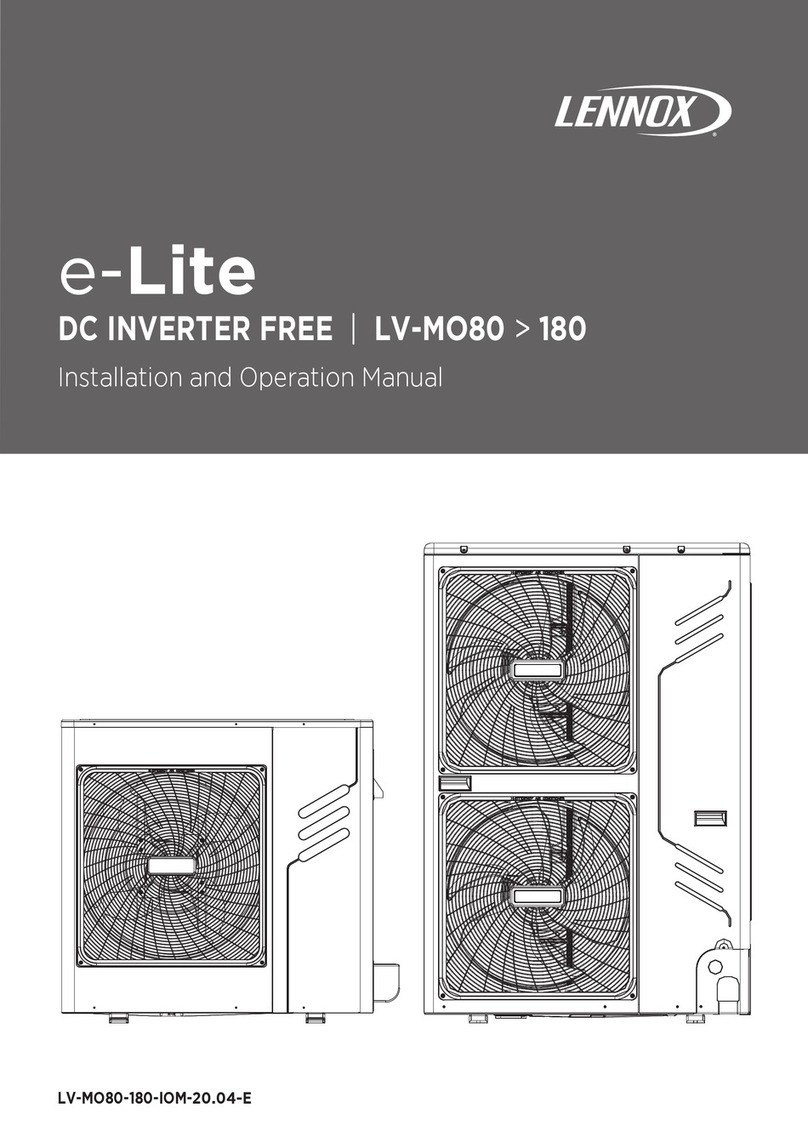
Lennox
Lennox e-Lite LV-M080 Series Installation and operation manual

Powermate
Powermate PMi 2000 user manual
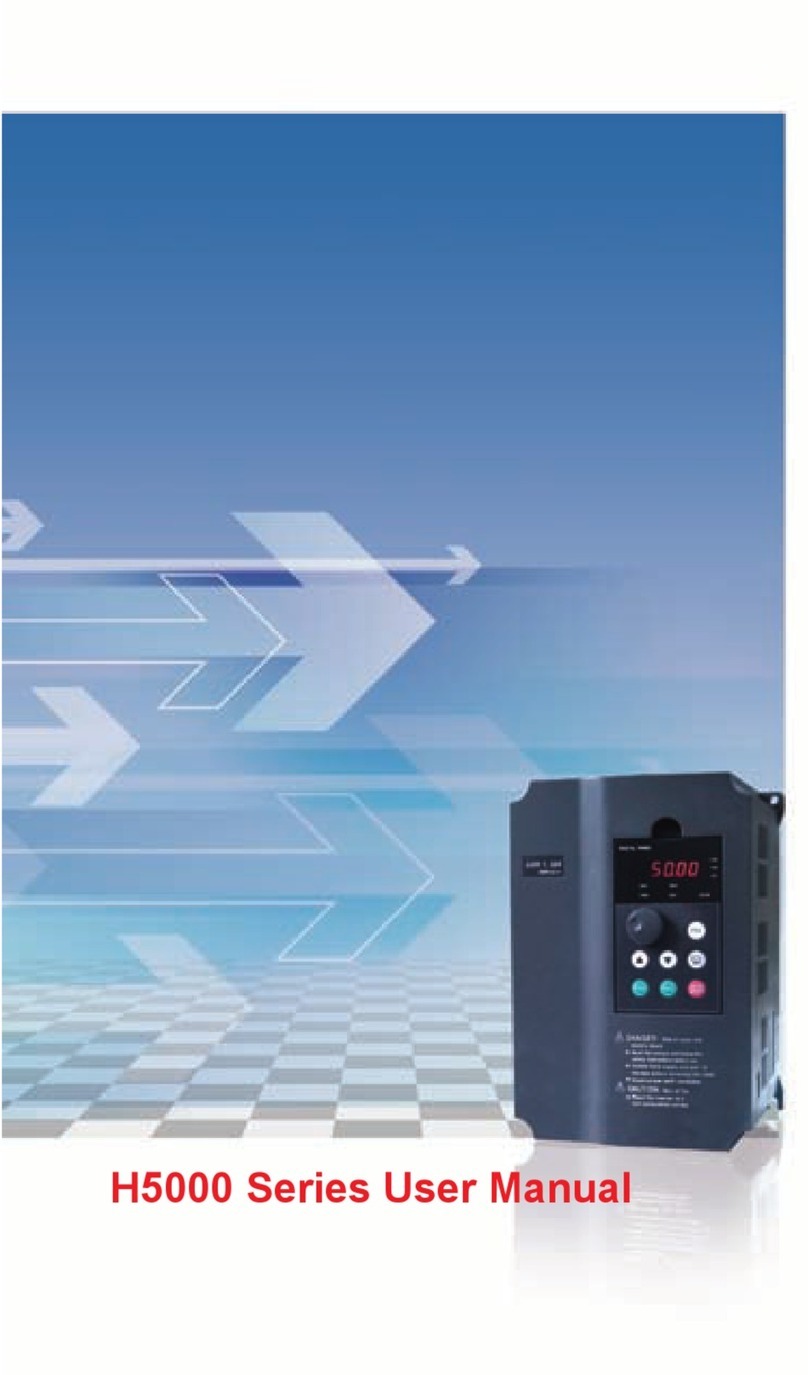
Zoncn
Zoncn H5000 Series user manual
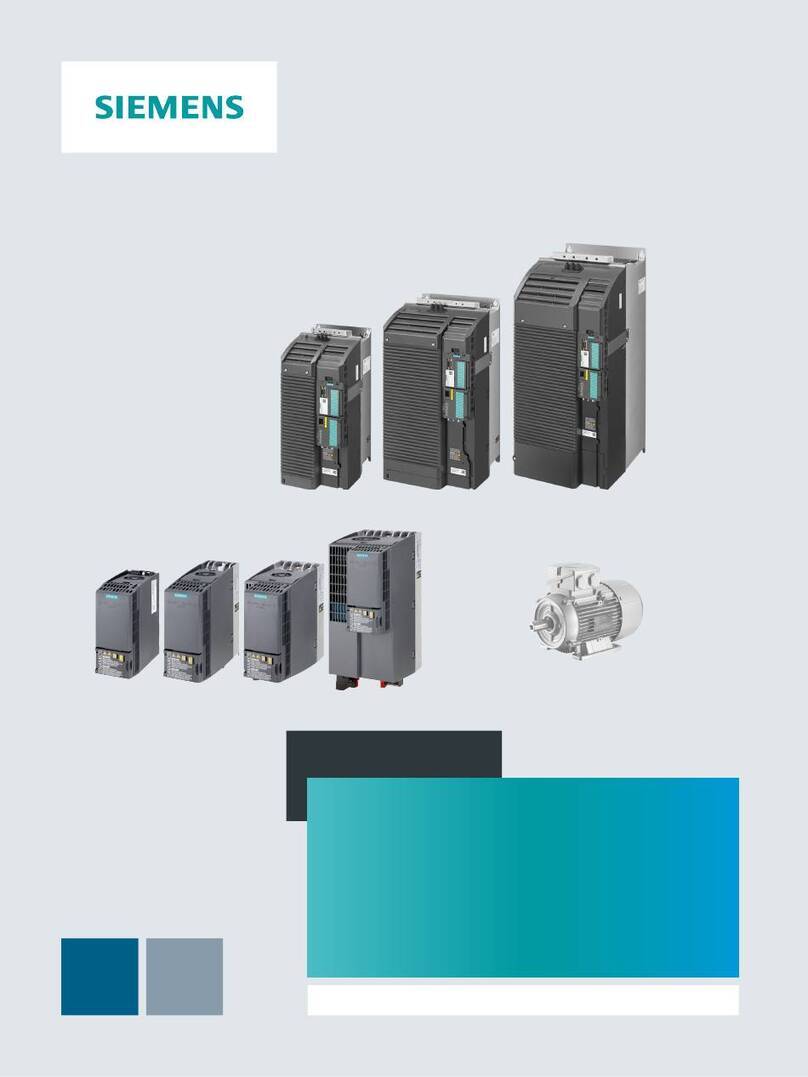
Siemens
Siemens SINAMICS G120C operating instructions
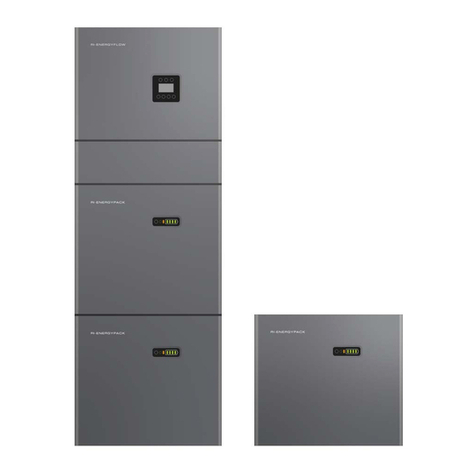
Rayleigh Instruments
Rayleigh Instruments RI-ENERGYFLOW-MODULAR Series user manual
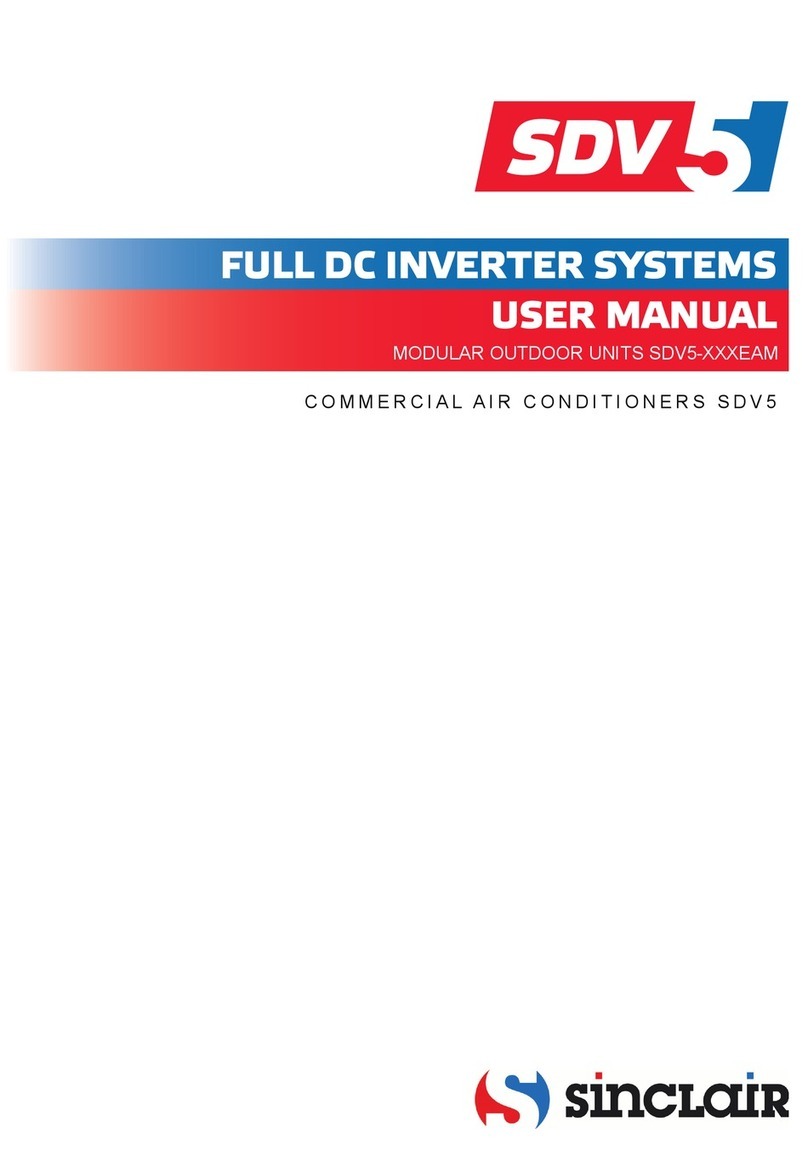
Sinclair
Sinclair SDV5 Series user manual
